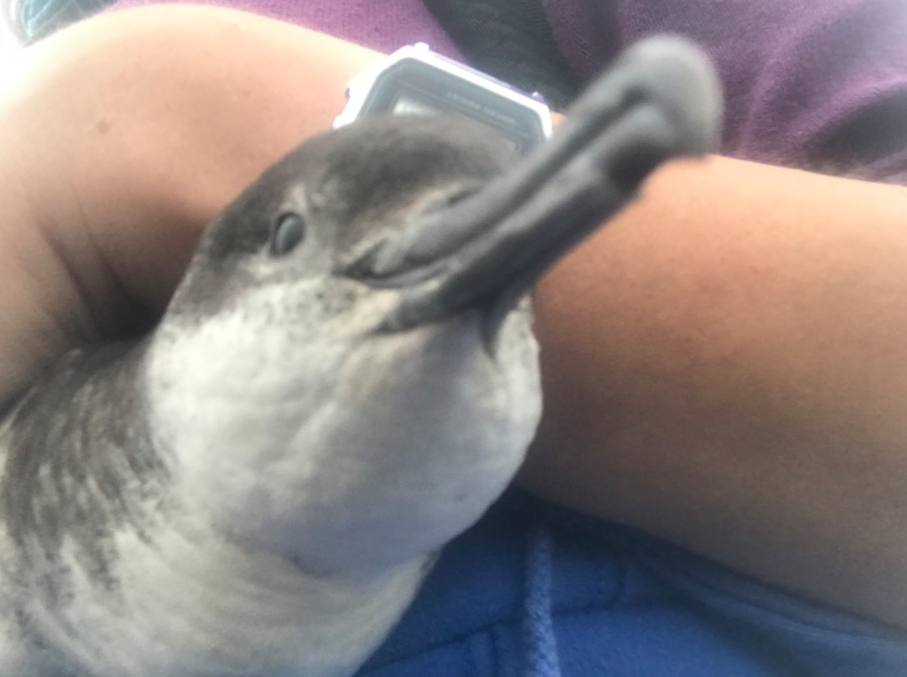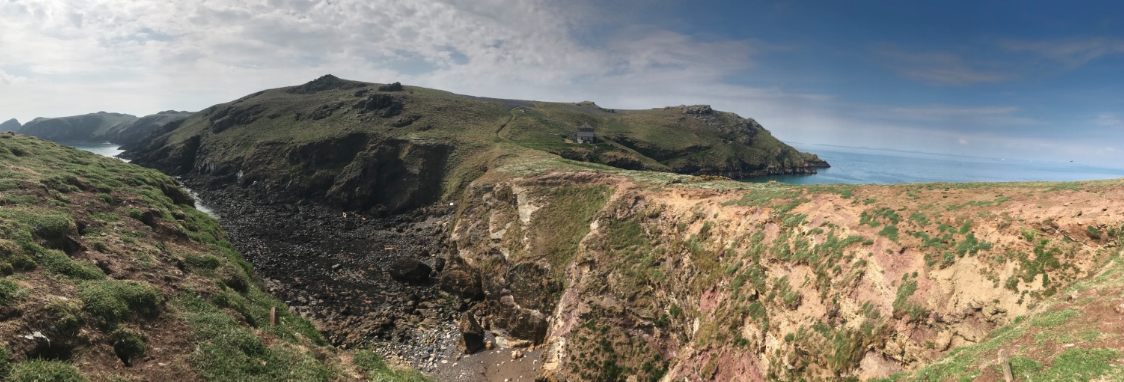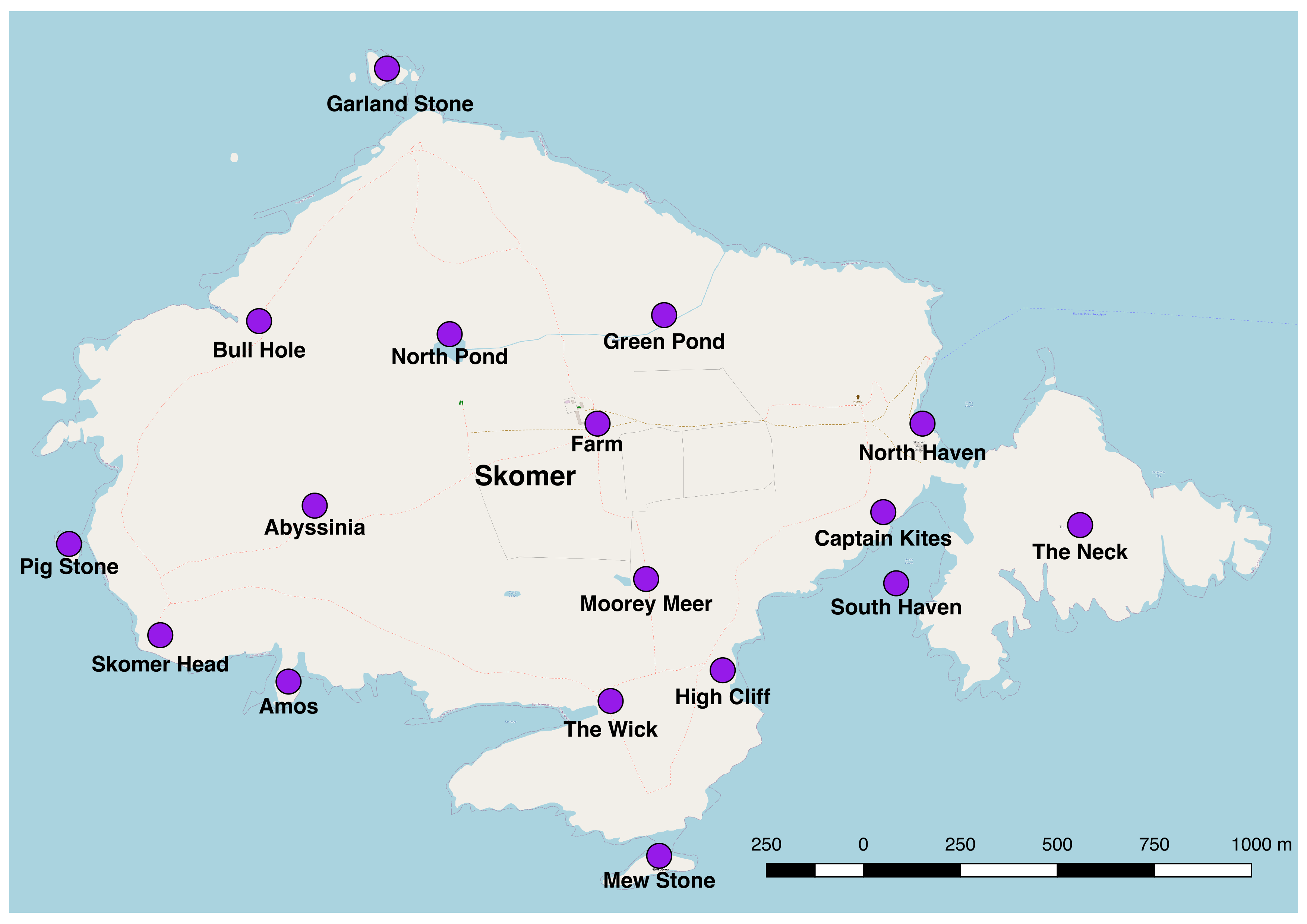The recurring theme for my blog posts is that I get behind on them, and this one started off that way! Today is meant to be my last day in the Falklands until October (well, technically yesterday was meant to be my last day, so we’ll see what happens). I have a few other posts planned that I will try and get around to once I’m back in Aberdeen, but I have a bit of time now, so I figured I’d see what I’d get written now.
A highlight of being here in the Falklands, as well as being one of the important things for me to be doing here, is the boat days collecting samples. My zooplankton samples are collected from a 10m boat called the RV Jack Sollis, which is a very nice catamaran. It’s size is great for collecting zooplankton, but not ideal once the swell gets bigger, and I’m not sure if this is a well known fact about the Falkland Islands, but it gets windy here!! Whilst here, I’ve been able to get out on the boat 4 times, 3 of those to collect zooplankton, and once to assist with side scanning. Ideally, we would have been able to get out at least one other time during that period, but the weather has been against us. Having said that, I have definitely enjoyed the days I have been able to get out – especially because of the opportunity it provides to see some of the amazing wildlife here! I don’t think I’ll ever get over the fact that my project sampling means I can see penguins, albatross, dolphins and so many more incredible species!
The first sampling trip was in mid-February, so late summer here. It was also the trip that had the highest variety of species (both in the zooplankton samples and seen from the boats). I collect my samples in Bongo nets, which means that there is a rigid frame with two nets attached. These are of different mesh sizes to make sure that I’m able to collect a range of species at different sizes. For all the of the trips that I’ve done, we’ve towed the nets behind the boat for 10 minutes, but for the spring samples (which were collected before I arrived), they were only towed for 5 minutes just because of the shear amount of biomass in the samples. Having sub-sampled and packed up some of those samples for transport north with me tomorrow, I can see why there was the shorter time! Once the samples have been collected, all of the zooplankton is washed down into the end of the net (known as the cod end) and then sieved to separate the samples from the water for preservation. As I’m using a combination of techniques to identify the zooplankton species, half of each catch is stored in ethanol (for DNA barcoding) and the other half in formalin (for morphological identification).
I have three sample sites, and we do 3 repeats at each site, so each of the boat days have been around 9 hours, give or take a bit – it all depends on the biomass. The most recent trip I was on in mid-May was the shortest, as there wasn’t a huge amount in the samples (expected for coming into winter) so it was very quick to sieve everything. Compare that to the March samples, which were dominated by jellyfish and comb jellies (hydromedusae and ctenophores), and we had to sieve both nets simultaneously, as the samples took so long to sieve because the jellies kept clogging up the mesh.
Part of my project is to look at the seasonal changes in the zooplankton abundance and distribution, so it’s great to already be able to see changes just by sieving the samples on the boat. The biomass in February was reasonably high at some sites (I have mixed feelings about copepods – I don’t have to count them for my project, but they do make it harder to find the things I do have to catch), and although the weights of the samples were similar in March, the range and dominance of species was so different. Now that I’ve gone through some samples from other months in the laboratory, I think I can say (based on observational data, not statistical analysis) that February has had the highest species diversity so far, and also the greatest diversity of Orders and Families as well. Despite the reasonably high biomass, the March samples had a relatively low species diversity, as there was a clear dominance in the samples, that I haven’t seen in any of the other samples that I’ve collected. Once again, based on observations, it does look like the ‘prize’ for lowest species diversity goes to the mid-October samples, which seem to be almost exclusively lobster krill larvae. This would be a less time-consuming observation if it weren’t for the fact that I have to identify the different larvae life stages as well as just counting them. I have discovered the joys of sub-sampling while looking at these. The May samples have had the lowest biomass, but despite this, have still had a range of species.
I mentioned that there have also been amazing species seen from the boat, this was especially the case on the first trip I went out on. Somewhere (packed at this point) I have a list of all the species that we spotted, but the fact that we saw three different species of whales has got to be the most insane highlight. An advance warning on the whales – although I will be adding photos to these blog posts once I have better internet, I will not be posting whale pictures because sadly I don’t have any! Although it is incredible that I am able to see so much wildlife on the collection days, I am primarily there to work, so I can observe, but can only take photos when there’s nothing else I need to be doing. We caught a glimpse of some minke whales and sei whales on that first trip – they have very defined sickle shape dorsal fins, but are also very different sizes (with minke whales being the smallest of the baleen whales). The best (and most exciting) whale observation was a young humpback that was curious about us, and was swimming around the boat, and we could see its back close by as it surfaced for air. Despite the lack of photos, I have a very clear mental image of that whale. As well as the zooplankton samples that day, there was also someone from SAERI who was filtering water as part of an eDNA project, who could look around more than we could when trying to get my samples through the sieves, and at one point she was calling out “There’s a whale! … There’s a whale! … Nobody cares.” We had to reassure her that we would LOVE to look at the whale, but we couldn’t until we were done going through the samples.
If any animal was guilty of showing up at the worst possible moment, it would have to be the Peal’s dolphins. Anyone who I have spoken to regularly since coming here will have already heard these complaints, but I am still amazed at the timing of these dolphins. They showed up on every one of the boat trips, and like clockwork, would arrive as I was having to sieve my samples. They’d be all around the boat, spy hopping and showing off, and then would swim off by the time I’d finished processing that repeat, and then would generally show up as I started to sieve the next sample! I will say for them, at least they did come close enough to the boat that I could generally watch them out of the corner of my eye, so it could have been worse!! Their appearance would often end up distracting my nice volunteers (one of my supervisors referred to them as ‘dolphin criers’) – amazingly, their effect was so strong that the others would forget what they had been doing a moment before. I can’t say a blame them, to be fair.
The birdlife here is insane!! As my first sampling trip was (just) within the first week of me being here, it meant I saw 4 new species of penguin in my first week here! I’ve already mentioned the penguins seen at Yorke Bay – loads of gentoos, a couple of Kings and then a few Magellanics (not that I counted the ones from Yorke Bay, as I didn’t spot them until going through my photos. From the boat, we could see rafts of penguins swimming, preening and porpoising around. I think I’ve seen gentoos on each of the boat trips, though surprisingly not to many in February. The main penguins I saw on that first trip were Magellanic and Rockhoppers. I still have a goal to see the rockies on land, so that’s high on the list for the next trip (I did technically see two moulting on land at the end of the season, but I missed out on seeing a proper rocky colony this time – saw the evidence of what had been an active colony. So many feathers!!) I definitely enjoyed watching them swim about and watch the boat. The gentoos seem to be the most curious about the boat, and on the day where we were side scanning (a way to survey the shape of the seafloor and figure out what the benthic habitat type is) we had a group of 4 that were following us for most of the day. There’s a small colony of King penguins on land near where we sample, so it was possible to spot 4 species on a sampling trip, just the Kings needed binoculars!
Another bird highlight for me would have to be the Procellariiformes, or tube noses. I wouldn’t be able to tell you which of these I was most excited to see, the first ones we saw were sooty shearwaters rafting in the morning, and that was pretty special. When the wind was in the right direction, you could smell them – which might sound like an odd comment, but they do smell nice!! (See earlier blog posts from my time on Skomer for more detail on how nice Manxies and Storm Petrels smell). Black-browed albatross have also been seen in large numbers regularly – they seem to be the tube noses that are most curious about what we’re doing (or more likely, the least fussed by our presence – they are very large birds) and tend to be around the boat and ‘supervising’ us in large numbers. They’ll also fly close by and directly over the boat, which is incredible. While flying, they’re very graceful, and they’re also reasonably graceful on the sea (except take-off). Like with the rockies, seeing albatross on land – especially the chicks – is high on my list of “things I’d like to see”. As mean as it sounds, I do want to see them try and land. The videos I’ve seen of that are amazing. Because I could probably spend a long time talking about sea birds, I’ll quickly go through some of the others I’ve seen (partly because it’s now lunch time and I’m quite hungry). Southern Giant Petrels have been regular sightings, both from the boat, but also while walking around Stanley. On windy days, they’ll be flying around the harbour, and have flown directly above me while I’ve been walking along the waterfront. While there not as big as albatross, they are still an impressively large bird to have so close. When side scanning, although there weren’t sooty shearwaters, there were large numbers of Great Shearwaters. These ones actually reminded me more of the Manxies, because of their dark back and white belly – though in this case, a brown back rather than navy. The most special tube nose I saw was the silvery fulmar. I’m a big fan of fulmar, and these were only seen on the later two trips (they’re not in the Falklands all year around), so it was amazing to spot a southern hemisphere species! Once I’d seen them, my goal was then to get a good photo of them. I didn’t quite manage that, but I did at least manage the latter half of the statement. It’s a start!!
Despite the jokes sometimes made about us only going for “fair-weather fieldwork” (out of necessity rather than choice) we were quite lucky with the weather for the sampling days. Technically, the only things we had to watch carefully were the wind and swell, so we could have had rainy days, but we did have some sunshine and blue sky on all of my zooplankton days. The side scanning day started out calm, and got rougher during the day. We were expecting a front to come through, but it did hit earlier than expected. What made that interesting was when I had to grab the freshly boiled kettle to stop it from sliding off the table – other things were left to fall, but that was definitely a risk!! Once it was secure, I had a moment where I wondered why I wasn’t feeling seasick given how bad the rocking was, then decided that was a bad train of thought to go down.
I could probably say a lot more about the sampling days, but what I can definitely say to round this off is that I’m really looking forwards to more sea days once I come back in October!
























































































































































































































